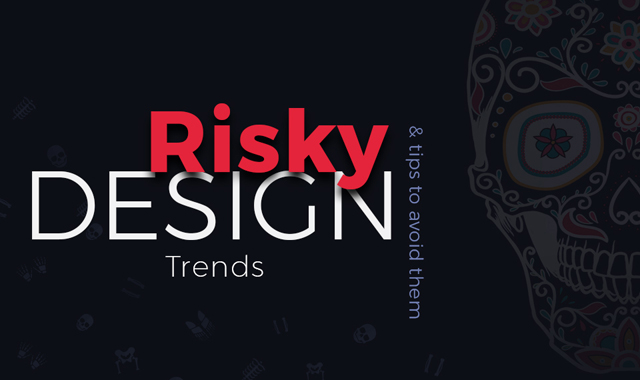What trends do you need to employ responsibly? Why are they so dangerous? What are the ways to escape the risk? You’ll find answers to all of the above questions in this article, written by creative web design and marketing experts from TemplateMonster.com, a powerful marketplace with a variety of digital products including best WordPress themes for all tastes and purposes that go along with tons of free eBooks and professional 24/7 support.
You have to remember that you shouldn’t use trends blindly. Trend is not a synonym for a good UX. Without creating the proper effect for the user, even a good-looking site turns into a less than satisfactory one. Of course, there are a variety of cool trends, and their number is constantly growing. Each year dictates new rules and trends in the sphere of visual design, and it seems that they can boost your online business but that happens only if you use them with caution.
Trends can turn into dangerous ones when they are used thoughtlessly. To implement them correctly, follow these golden rules:
- don’t overuse;
- ask yourself: “Do my users really need this design element?”;
- make sure that a trend is relevant.
- work as bright flashes and can make people's eyes bleed (metaphorically speaking!);
- cause poor readability when they are used near the text.
- balance with dark/neutral colors;
- use sparingly to draw attention, guide the user;
- avoid using as the main background;
- avoid using near the main text copy.
- can compete with the main text or navigation.
- use against monochrome background;
- implement in minimal layouts;
- make sure they don’t aggravate readability.
- delayed interaction with the site, because of a long animation load time;
- distracts users;
- confuses them.
- make it subtle;
- not confusing;
- make it smooth, not jumpy or mechanical;
- make it fast;
- avoid mixing up too many effects;
- don’t overload your site with it.
- can be disorienting for users;
- is more mobile, than web-oriented;
- is not SEO-friendly;
- is slow to load.
- use it sparingly;
- use a reasonable number of floating elements; use subtlety to point out small elements (product imagery/pull quotes);
- avoid using on word-heavy content or eCommerce sites.
- makes it hard to scan/find the content;
- can turn the design into chaos.
- balance with well-structured blocks;
- keep grouped elements in proximity;
- separate text blocks clearly;
- use overlapping elements with contrasting types;
- don’t use for content-oriented sites.
- affects readability;
- can be lost on the page.
- surround it with negative space;
- make it visible with a contrast between colors/images;
- use typography size not less than 13pt.
- can mislead.
- should be intuitive;
- accessible from every page;
- best for small/medium sites.
- have a bad reputation;
- look unreal;
- are unemotional;
- don’t engage.
- choose better stock imagery;
- make artful edits;
- try to avoid them.
- can be disorienting;
- is bad for page load time.
- suggest call-to-actions, tooltips to point out navigation options;
- offer a sticky footer, menu;
- best for social media sites, blogs, shops;
- avoid truly endless sites.
- zero engagement;
- are aggressive;
- may increase bounce rate.
- design as non-intrusive as possible;
- make them simple, distinctive, valuable;
- be aware of timing and position;
- avoid entry pop-ups;
- avoid asking for contact details;
- run A/B tests on how best to communicate with users.
- is hard to find sometimes;
- is confusing when it has too many options inside.
- use a recognizable icon;
- bring menu into focus;
- support various browsers for correct display of the icon.
- bad readability of the content above;
- endless videos;
- no control buttons;
- makes sites heavy.
- choose contrasting content color;
- compress the video as much as you can;
- use short looping videos;
- avoid audio, it’s annoying;
- offer a pause button.



